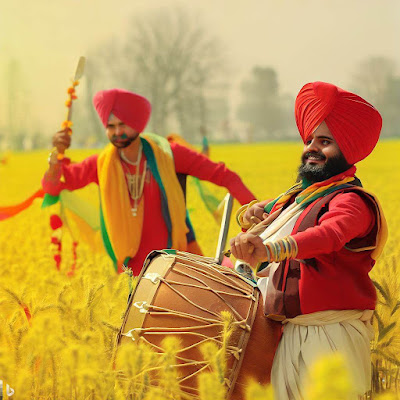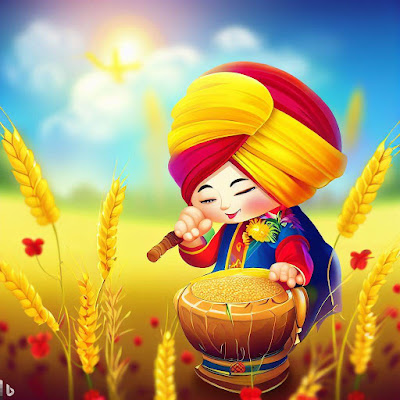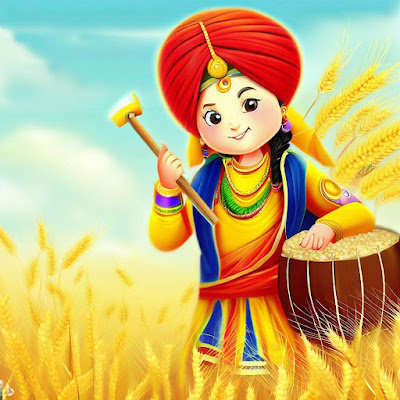Baisakhi in india
Baisakhi is a festival celebrated in India, particularly in the northern state of Punjab, by the Sikh community and Hindus. It falls on April 13 or April 14 every year and marks the beginning of the Hindu solar New Year.
For the Sikh community, Baisakhi has a special significance as it marks the establishment of the Khalsa Panth by Guru Gobind Singh in 1699. On this day, Sikhs visit gurdwaras (Sikh temples) and participate in processions, sing hymns, and share food in a tradition called langar.
In Punjab, Baisakhi is celebrated with great enthusiasm and people dress up in colorful clothes and participate in bhangra and gidda dances. The festival also marks the harvesting season and farmers offer prayers for a good harvest.
Apart from Punjab, Baisakhi is also celebrated in other parts of India, such as Haryana, Himachal Pradesh, and Jammu and Kashmir, where it is known by different names like Vaisakhi and Bihu.
Baisakhi Celebration:
Baisakhi is primarily celebrated in the northern state of Punjab and is one of the most significant festivals for the Sikh community. However, it is also celebrated in other parts of India, particularly in regions where agriculture is the primary occupation. Here are some details about how Baisakhi is celebrated in different states of India:
Punjab: Baisakhi is the biggest festival in Punjab, and the celebrations last for two days. The festival marks the beginning of the Punjabi New Year and is celebrated with great enthusiasm. People dress up in traditional Punjabi attire, and the celebrations include music, dance, and feasting. The famous bhangra and gidda dance forms are an integral part of the festivities.
Haryana: Baisakhi is celebrated as a harvest festival in Haryana and is known as 'Baisakhadi' or 'Bisakh'. Farmers offer prayers for a good harvest, and the celebrations include traditional folk dances and music.
Himachal Pradesh: Baisakhi is celebrated as a cultural festival in Himachal Pradesh and is known as 'Bisu'. People dress up in colorful clothes and participate in traditional dances and music.
Jammu and Kashmir: In Jammu and Kashmir, Baisakhi is celebrated as 'Baisakhi' or 'Bishu'. The festival marks the end of the winter season, and people celebrate by visiting temples and offering prayers.
Assam: Baisakhi is celebrated in Assam as 'Bohag Bihu', which marks the beginning of the Assamese New Year. The celebrations include traditional dances, music, and feasting.
Overall, Baisakhi is a festival that is celebrated with great enthusiasm and fervor in various parts of India, and the celebrations vary depending on the region and cultural traditions.
Wish to all
Baisakhi wishes that you can share with your friends and family:
Wishing you a very happy and prosperous Baisakhi. May the festival bring you joy, happiness, and success in all your endeavors.
May the divine blessings of Waheguru be with you on this Baisakhi. May you be blessed with love, happiness, and prosperity.
On this auspicious occasion of Baisakhi, may your life be filled with happiness, peace, and prosperity. Happy Baisakhi!
As we celebrate the festival of Baisakhi, let us pray for peace, harmony, and happiness for all. Wishing you a very happy Baisakhi!
May the festival of Baisakhi bring you joy, prosperity, and success in all your endeavors. Happy Baisakhi to you and your family!
Let us celebrate the spirit of Baisakhi with joy and happiness. May the festival bring new beginnings and success in your life. Happy Baisakhi!






Comments